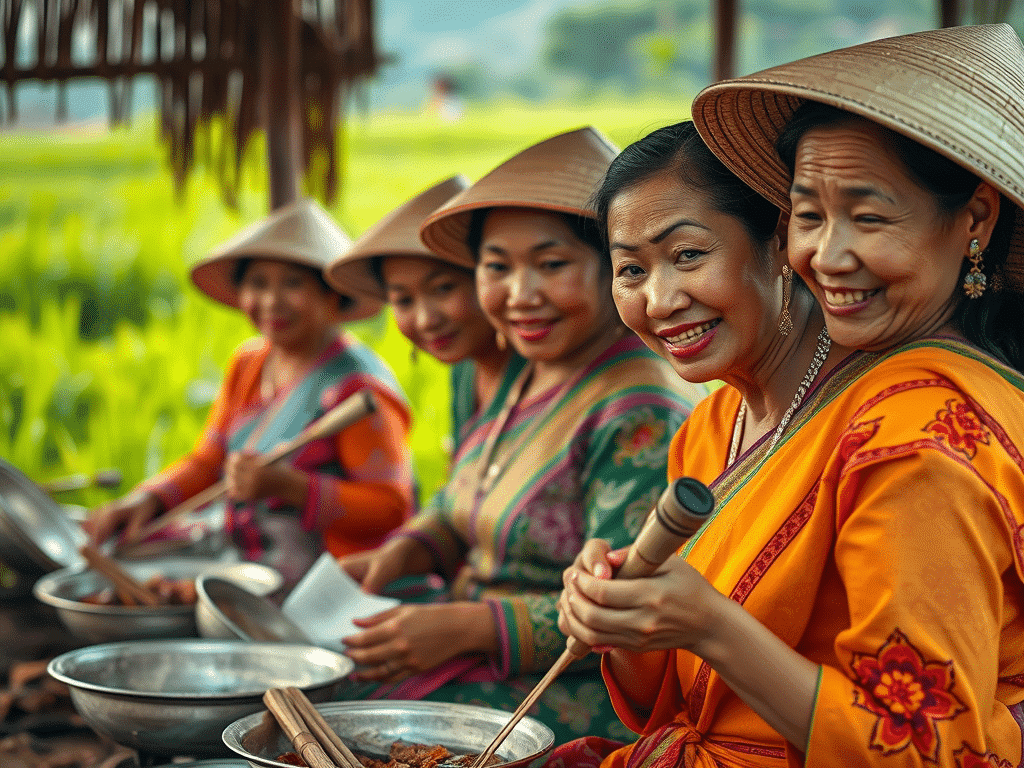The Truth About Thai Isaan Girls: Myths and Realities
Slug : truth-thai girls-isaan
Meta Description : Discover the truth about Isaan girls in Thailand: origins, daily life, encounters and misconceptions. A guide to understanding this region and its inhabitants without prejudice.
Understanding Isaan and its inhabitants
Isaan, or northeastern Thailand, is the largest region in the country, made up of 20 provinces and home to about one-third of Thailand’s population. Often associated with poverty and a rural culture, this region is also rich in traditions, music (such as the “morlum”) and human warmth. Isaan girls, called “khon Isaan” in a broad sense, are the focus of many discussions, especially among foreigners or “farangs” who visit or live in Thailand. But what is the truth about these women? Are they all stereotypes of “bar girls” or opportunists seeking to seduce Westerners? This article explores the realities and unravels the myths.
The girls of Isaan are often perceived through the prism of the stories of expats or tourists. Many meet them in big cities like Bangkok, Pattaya or Phuket, where they migrate to work – whether as waitresses, receptionists or in the entertainment industry. However, this image reflects only part of their reality. Isaan is a land of contrasts, between agricultural villages and modern aspirations, and its inhabitants embody this duality.
Who are Isaan’s daughters?
A region marked by history and culture
Isaan is mainly populated by Lao ethnic groups, a historical heritage that distinguishes its inhabitants from central or southern Thais. This “Lao Isaan” identity can be found in the language spoken at home (the Isaan dialect, close to Lao), the spicy cuisine and the strong family traditions. Girls grow up in an environment where community and family are paramount, often in difficult economic conditions due to drought and lack of natural resources. Rice is the main source of income, but it is not always enough.
Migration: a necessity, not a choice
Millions of people leave Isaan to look for work elsewhere, especially in tourist centers. The Isaan girls are no exception: they become cleaners, saleswomen or, in some cases, sex workers. This migration is not a sign of “low morality”, as some claim, but a pragmatic response to poverty. Unlike the southern or northern regions, Isaan benefits little from local tourism, which pushes its inhabitants to adapt elsewhere.
Diversity of profiles
To speak of the “daughters of Isaan” as a homogeneous group is a mistake. Some are students at Surindra Rajabhat University, others are farmers helping their parents, and still others are urban workers dreaming of a better life. Yes, a minority works in bars, but they do not represent all the women in the region. The truth is that their lives depend on their context, not on a predefined fate.
Myths and Facts About the Daughters of Isaan
Myth 1: They are all looking for a rich “farang”
It is often heard that the daughters of the Isaan see foreigners as “ATMs”. This idea comes from certain experiences in tourist areas, where transactional relationships exist. But it’s not exclusive to Isaan – it happens everywhere in Thailand where tourism is thriving. In reality, many of the Isaan girls never meet strangers or have no interest in them. Those who marry “farangs” (the “mia farang”) sometimes do so for money, but also for stability or an idealized view of Western men as “good husbands”.
Myth 2: They lack education
A common cliché is that Isaan’s daughters are “illiterate” or “simple”. While access to education is more limited in rural areas, many go on to secondary or even university education. Their “simplicity” is often a cultural façade – a Thai politeness – and not a lack of intelligence. Prejudices also come from the contempt of the Bangkok elites for the Isaan, perceived as “backward”.
Reality: Strong family loyalty
A characteristic that is often true is their attachment to the family. In the Isaan culture, supporting one’s parents is a priority, especially for girls, who are considered the “good girls” who send money back to the village. This may include financial expectations in a relationship, but it’s not systematic or exclusive to “farangs” – a Thai boyfriend might be solicited in the same way.
Meeting Isaan Girls: Where and How?
Authentic places
To meet Isaan girls in their element, nothing beats local markets like Krungsrinai Road in Surin or traditional festivals (like the Surin Elephant Festival). These places offer a relaxed atmosphere where they feel comfortable. In Bangkok, neighbourhoods such as Victory Monument or the bars of the RCA attract students or young workers from the Isaan.
Bars and nightlife
In cities like Pattaya or Phuket, bars employ a lot of Isaan girls. Some work there as hostesses (with rates around 1000-2000 baht for a “short time”), but others are simply waitresses or customers who have come to have fun. The approach here must be cautious and respectful to avoid misunderstandings.
Dating apps
Thai Friendly and Tinder are popular in Isaan. Many girls are looking for friends, opportunities, or a serious relationship. Mention your interest in their culture (e.g., “I love Isaan food!”) to make a sincere connection.
Tips for a successful interaction
Respect their culture
A “Sawasdee” and a few words like “Aroy” (delicious) or “Sabai dee” (are you okay?) show your curiosity. The girls of Isaan appreciate the effort, even if their English is limited. Avoid intrusive questions about their past or family.
Be clear about your intentions
Whether you’re looking for a friendship or more, be honest. Misunderstandings arise when expectations differ – they might see a “farang” as a potential support, while you’re just looking for a conversation.
Dress appropriately
In Isaan, a clean and simple outfit (t-shirt, light pants) is enough. In Bangkok or in the clubs, a neat look will set you apart from the neglected tourists.
The limits of perceptions about the daughters of Isaan
A vision biased by tourism
Stories about Isaan girls often come from men who frequented bars, which distorts the reality. The majority of the women of Isaan do not work in this environment and lead ordinary lives.
Poverty is not inevitable
Although Isaan is poorer, the new generations aspire to more: education, modern jobs, independence. Stereotypes of “opportunists” ignore this evolution.
Conclusion: A nuanced truth
The truth about the Thai girls in Isaan is neither black nor white. They are women shaped by their region – its economic challenges, rich culture and family values – but they are not just about clichés. Some are indeed looking for a “farang” to improve their lives, but many simply want to live, love and laugh like anyone else. Meeting them requires overcoming prejudices, listening to their stories and appreciating their humanity.
Whether you’re visiting Surin, Bangkok, or a remote village, the Isaan Girls offer a window into authentic Thailand. With respect and openness, you will discover much more than a caricature – perhaps a friend, a partner or just a beautiful encounter under the sky of Isaan.




